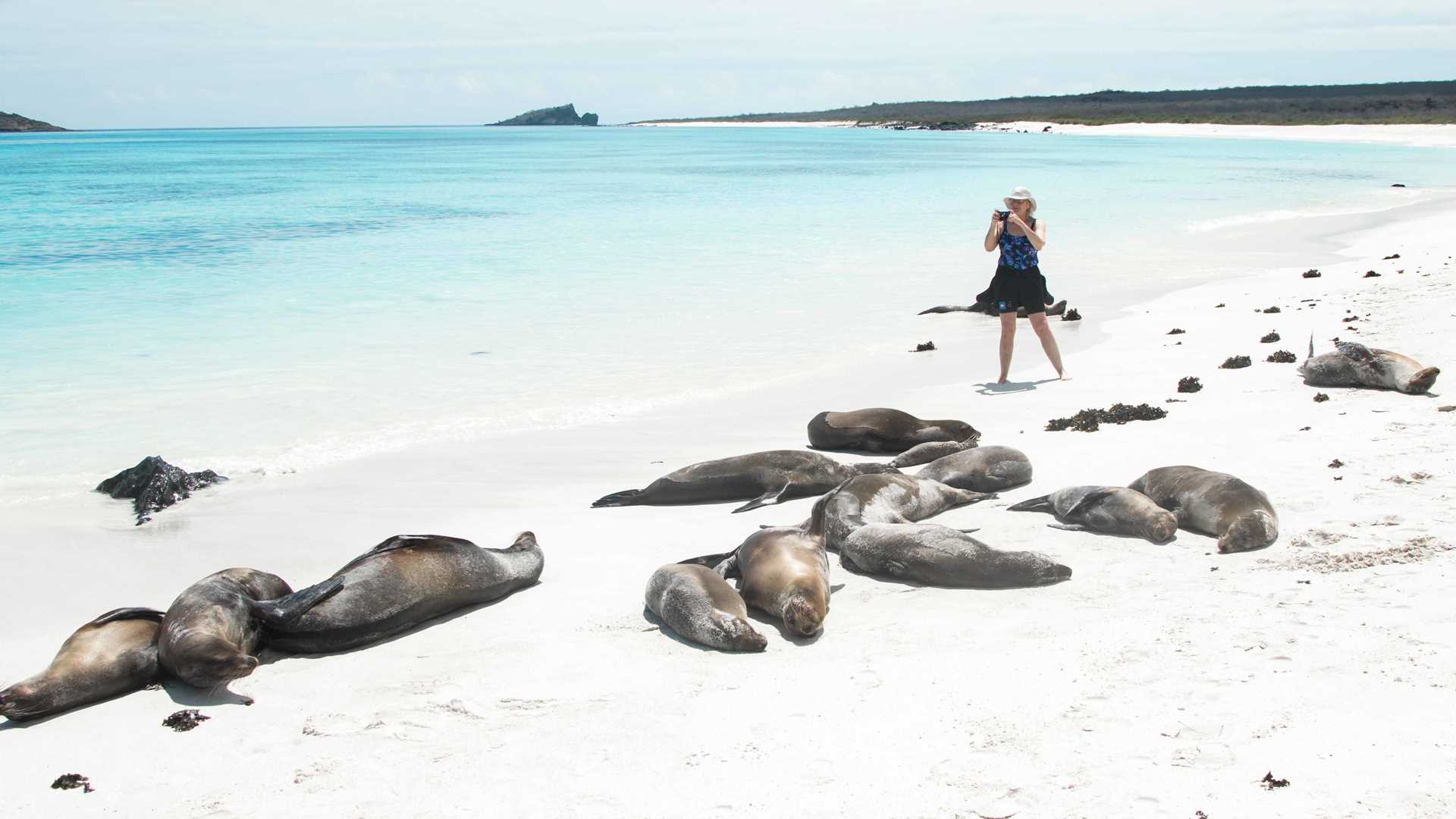Our first full expedition day took place on the magical island of Espanola, also known as Hood Island. Espanola Island is about 3.2 million years old, which makes it the oldest of the Galapagos Islands today. Espanola Island have been geological dead for many years, and as you observe from a distance you can only wondered what type of life could live in such an inhospitable place full of lava rocks and dry forest. As you set foot on land all your wonders fade, as you experience the overwhelmingly beautiful life on Espanola Island, a life given by its surrounding rich nutrient waters. In the morning we woke up to a beautiful sunrise and a calm sea to go kayaking, and we observed many pacific green sea turtles mating. The rest of the morning we spent it snorkeling in Espanola crystal clear water and walking along its white sand beach, where a colony of sea lion come to rest. While we were having a typical Ecuadorian lunch, the Capitan moved the National Geographic Islander to the south flank of Espanola and in the afternoon we disembarked in Punta Suarez. Along the walk we had very close encounters with Christmas iguanas, numerous sea lion pups, endemic mockingbirds and lava lizards, Nazca boobies and the majestic Galapagos Hawk. A truly magical day to start a magical trip!
- Daily Expedition Reports
- 12 Feb 2018
Espanola Island, 2/12/2018, National Geographic Islander
- Aboard the National Geographic Islander
- Galápagos
Gianna Haro, Naturalist
Most of Gianna´s memories seem to be dreams, made on flawless white sandy beaches with black lava rock contours and gorgeous turquoise ocean waters. Most of it happened while barefoot, in an enchanting place that some people regard as an ideal natura...
Read MoreJonathan Aguas, Naturalist/Certified Photo Instructor
Jonathan was born into one of handful families that reaches back five generations in the Galapagos in the town of Puerto Baquerizo Moreno on San Cristobal Island. He grew up swimming among unique freshwater springs owned by his family at the highland...
Read MoreShare Report
Related Reports
11/23/2022
Read
National Geographic Islander II
Isabela and Fernandina
Our day began with the chance to point out a lot of interesting geological features as we enjoyed Zodiac tours along a massive flank of Ecuador Volcano on Punta Vicente Roca. In the afternoon, we took a sunny walk on Punta Espinoza on Fernandina Island. We spotted many iguanas, and a bunch of sea lions hanging around, too.
11/22/2022
Read
National Geographic Islander II
North Seymour & Rabida Islands
Relatively small and low compared to neighboring Santa Cruz, North Seymour is located to the north of Baltra. The island is dry with predominantly low shrubs, like prickly pear cacti. The incense trees are bare during the dry season. Seabirds like frigatebirds and blue-footed boobies nest on the island, and sea lions rest on the sand when they are not fishing. Land and marine iguanas also live here. Rabida is in the middle of the archipelago and has a striking red sand beach. We observed a small colony of sea lions of all ages resting or nursing. Behind the beach, American flamingos nest in a brackish lagoon. This island is full of contrasts and wildlife that we enjoyed observing during this day of expedition.









